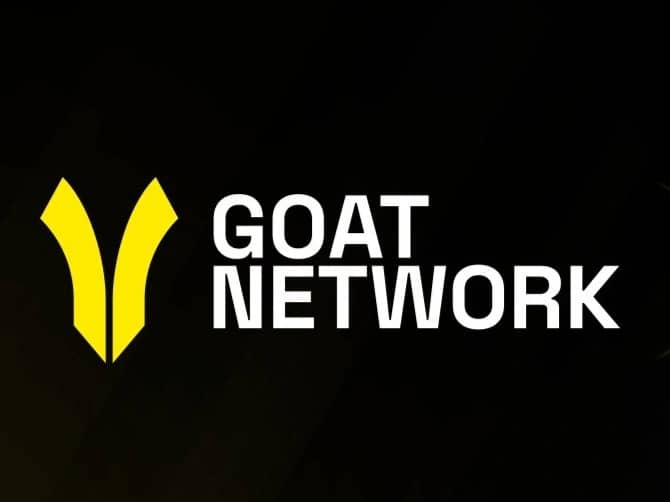订阅 wiki
Share wiki
Bookmark
GOAT Network
GOAT Network
GOAT Network 是一个 比特币 Layer 2 解决方案,旨在为 比特币 区块链上的 去中心化应用程序 和金融活动提供安全、可持续且无需信任的基础设施。它旨在通过链上经济活动为 比特币 和 狗狗币 持有者实现真正的收益,其特点是避免通货膨胀的代币发行 [1]。
2025年7月,该项目启动了一个公共测试版,声称是直接建立在 比特币 上的第一个零知识rollup,能够在三秒内生成加密证明 [25]。
概述
GOAT Network 将自己定位为首个提供原生收益的 比特币 ZK Rollup,专注于扩展比特币作为价值存储之外的效用。该项目强调继承比特币的安全性,同时引入高级功能,如智能合约和去中心化金融(DeFi)应用。其核心使命是创建一个植根于比特币的新数字经济,让从比特币最大化主义者到狗狗币爱好者等广泛的加密用户都能访问 [1] [2]。
2025 年 7 月推出的“BitVM2 Beta”旨在解决 比特币 上长期存在的性能问题,包括交易最终确认速度慢以及缺乏可扩展的、以 比特币 计价的收益选择。联合创始人兼首席执行官 Kevin Liu 表示,“Layer 2 交易速度很快,但如果没有同样快速的证明在 比特币 主网上完成最终确认,它们就毫无意义。如果证明滞后,就会产生效率低下和安全风险” [25]。
该网络建立在无需信任的基础设施、原生收益和无限潜力的原则之上,旨在为在 比特币 生态系统中构建、赚取和玩耍提供一个强大的环境 [1]。
GOAT Network 的开发得到了 ZKM 的支持,这是一个通用结算基础设施,已筹集了 500 万美元的资金来推进其技术。ZKM 的参与强调了 GOAT Network 对安全且可扩展的 比特币 Layer 2 解决方案的承诺 [3]。
GOAT Network 的收益生成方法旨在具有可持续性,从区块链上的真实经济活动中获得回报,而不是依赖于发行新代币。这种模式为希望从其 比特币 和其他支持的资产中获得收益的用户提供了一个稳定且有吸引力的选择 [4]。
技术
GOAT Network 的技术基础建立在继承 Bitcoin 原生安全性的基础上,利用先进的密码学技术和去中心化机制。该网络集成了内部开发的 zkMIPS 和 GOAT BitVM2,这对于其零知识 rollup 架构至关重要。这种组合旨在提供一个无需信任的环境,交易在链下处理,然后在 Bitcoin 主网上验证,确保高吞吐量和低成本,同时保持 Bitcoin 的安全保证 [1] [5]。其测试网使用 GPU 驱动的节点分布式系统,并行处理区块、聚合和 Groth16 证明。根据该项目,这种设置消除了瓶颈,允许近乎即时的提款,并能够在三秒内生成 ZK 证明 [25]。
安全模型
GOAT Network的安全模型旨在消除单点故障并最大限度地减少信任假设,它建立在三个层面上:去中心化排序器、具有乐观挑战过程的无需信任桥以及确保交易有效性的ZK证明 [25]。其安全基础设施的关键组件包括:
- zkMIPS 和 GOAT BitVM2: 这些技术构成了网络无需信任桥的基础,实现了比特币主网和 GOAT Network 之间安全资产转移,而无需依赖信任的中介或多方计算 [6]。GOAT Network 声称是 BitVM2 的首个实时实现,标志着 比特币 Layer 2 开发的重要一步 [1]。
- 去中心化排序器: 该网络利用去中心化排序器集来排序和批量处理交易。这种去中心化防止任何单一实体审查交易或成为故障点,从而增强了网络的弹性和抗审查性 [7]。
- 乐观挑战协议: GOAT Network 包含一个乐观挑战协议,该协议允许在一段时间内任何人挑战 rollup 状态转换的有效性。如果挑战成功,则会恢复不正确的状态,并且负责的排序器会受到惩罚。这种机制与零知识证明相结合,提供了一个强大的安全层 [8]。首席执行官 Kevin Liu 指出,“如果恶意节点更改交易,则证明将无法通过” [25]。
- 保证退出: 该网络确保基于 1-of-n 诚实假设的保证退出机制。这意味着只要网络中至少有一个参与者是诚实的,用户始终可以将他们的资产提取回 比特币 主网,即使在不利的情况下 [1]。
关键组件
GOAT网络生态系统由几个技术组件支持,这些组件促进其运营和用户交互:
- GOAT桥: 一个用于在比特币和GOAT网络之间转移资产的关键组件,使用zkMIPS和GOAT BitVM2构建,以确保无需信任的操作 [9]。
- 网络 & RPC: 提供开发者和用户与GOAT网络交互所需的必要端点,包括访问网络配置和远程过程调用 [10]。
- 合约地址: 在GOAT网络上部署的关键智能合约的公开可用地址,对于应用程序开发和交互至关重要 [11]。
- Subgraph: 一种数据索引解决方案,允许开发者为其应用程序高效地查询区块链数据 [12]。
- Oracle 和 VRF: 集成用于真实世界数据馈送的Oracle服务和用于安全随机性的可验证随机函数(VRF),支持各种去中心化应用程序 [13] [14]。
经济模型和收益生成
GOAT Network的经济模型侧重于通过链上经济活动产生真实、可持续的比特币收益,而不是依赖于通货膨胀的代币发行。这种方法旨在为用户提供稳定且有吸引力的收益,与比特币的长期价值主张相一致[4]。该网络允许用户赚取原生BTC收益,值得注意的是,还支持质押狗狗币(DOGE)以赚取比特币[15]。收益来自GOAT Layer 2上以比特币支付的gas费用;用户可以将比特币质押到去中心化的排序器节点中,并赚取他们产生的费用的一部分。首席执行官Kevin Liu评论了对此的需求,他说:“我们交谈过的几乎每一位比特币持有者——无论大小——都想要收益,但他们不愿意出售他们的比特币来获得它”[25]。
收益策略
GOAT Network 为用户提供多种产生收益的策略,以满足不同的风险偏好和投资期限:
- SafeBox: 一种低风险选择,提供固定的收益,广告宣传的年化收益率为 2%,专为寻求长期稳定回报的 比特币 持有者设计 [16] [17]。
- PoS 质押: 用户可以质押他们的资产来保护网络并赚取奖励,广告宣传的年化收益率为 104.42%。此策略涉及与网络参与相关的低风险 [16]。
- 期权市场: 对于风险承受能力较高的用户,该平台通过期权市场提供 BTCFi 衍生品,广告宣传的年化收益率为 10%。这允许更积极地参与去中心化金融策略 [16]。
这些量身定制的 BTCFi 策略的共同点在于,它们专注于提供真实、可持续的 BTC 收益,旨在创建一个植根于 比特币 并向更广泛受众开放的新型数字经济 [1]。
生态系统与合作伙伴
GOAT网络已经建立了一个合作伙伴和合作者生态系统,以支持其发展并扩大其影响力。这些合作关系涵盖了区块链和加密货币领域的各个部门,包括基础设施提供商、DeFi协议以及在GOAT网络上构建或与之集成的其他项目。该网络的生态系统旨在促进创新,并为用户和开发者提供多样化的机会 [18]。
GOAT网络生态系统中的著名合作伙伴和项目包括:
- Haskey [18]
- RockX [18]
- Symbiosis [18]
- Avalo Labs [18]
- Amber [18]
- Artemis Finance [18]
- Stable Jack [18]
- BitSmiley [18]
- BitPerp [18]
- JasperVault [18]
- Solv [18]
- Nudex [18]
- Vdex [18]
应用和用例
GOAT Network支持一系列应用和用例,大致分为“构建”、“赚取”和“玩乐”。该网络为开发者提供了构建去中心化应用(dApps)的资源和工具,并为用户提供了参与生态系统的途径 [1]。
- 构建: 开发者可以利用GOAT Network创建智能合约和应用。该平台支持Solidity,这是一种流行的区块链开发编程语言,并提供预编译合约、交易费用和费用估算文档。这允许创建各种DeFi协议、游戏应用和其他去中心化服务 [19] [20]。
- 赚取: 如经济模型中所述,用户可以通过各种策略(如SafeBox、PoS质押和期权市场)赚取原生BTC收益。这为被动收入和积极参与BTCFi提供了机会 [16]。
- 玩乐: “One Piece Project”是GOAT Network生态系统中的一个游戏或互动应用示例,旨在通过边玩边赚或类似模式吸引用户 [21] [22]。
此外,该网络还支持排序器操作,允许个人运行排序器节点,为网络安全做出贡献并获得参与奖励 [23]。GOAT Network还举办“2025全球巡回展”,这是一系列旨在连接区块链领域的领导者、创造者和创新者的活动,以促进合作和增长 [24]。
该项目于2025年7月向公众发布了BitVM2 Beta版。计划在2025年底之前全面公开发布BitVM2 ZK Rollups [25]。
发现错误了吗?
